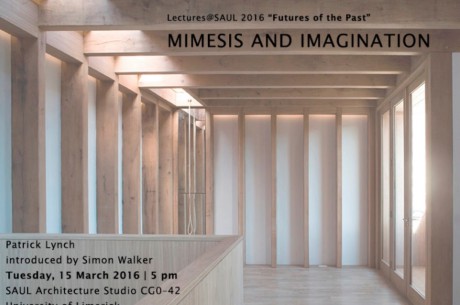Mimesis and Imagination
15 March 2016 5:00 pm at SAUL Studio
Speaker: Patrick Lynch introduced by Simon Walker
Patrick Lynch discusses the creative processes of one of London’s most critically acclaimed architectural practices in its theoretical and cultural context. The work of Lynch Architects is remarkably diverse for a relatively small practice, ranging from large urban buildings to product design and academic research. This talk situates the practice’s recent buildings in London alongside earlier projects within a tradition of decorum and urban depth. Lynch establishes the continuing relevance of the classical concept of mimesis in modern culture, and reveals the communicative role that memory, history and typology play in the contemporary architectural imagination. Mimesis and Imagination also explores the vital role that physical creative work and craft play in design, recovering the critical grounds for a poetics of civic architecture.
Patrick Lynch studied architecture at Liverpool University 1987–93 and holds a Masters degree in The History and Philosophy of Architecture from Cambridge University 1995–96. He gained his PhD from The Sir John Cass Faculty of Art in 2014. Besides being the founding director of Lynch Architects, Patrick has taught at the Architectural Association, London Metropolitan University and University College Dublin, and he is currently lecturing on The History and Theory of Architecture at Cambridge. Patrick represented Ireland at the Venice Biennale in 2008 and then he exhibited at Venice again in 2012. His writing has been widely published, including “The Theatricality of the Baroque City” (2011) and “Mimesis” (2015).
“Futures of the past” looks at buildings of the past and how we think about their future. Aware of the necessarily creative and destructive role of architecture we hold a deep interest in what exists. This series of talks is a public forum intended to address a range of questions on architecture’s role, past and present. The current suite of lectures focuses on architects in the role of curators of historic buildings as well as the technologies of preservation.

